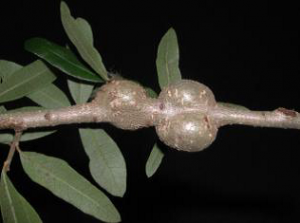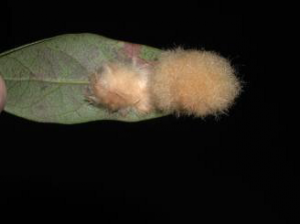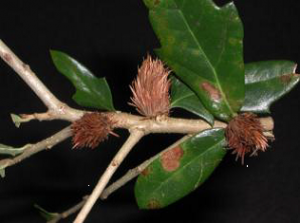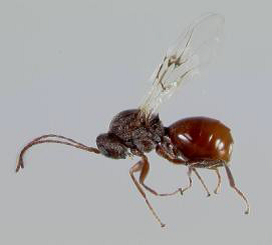 As oak trees are now fully leafing out and people start hanging out in the shade of the canopy, many of you are noticing strange growths on the branches. They look like potatoes, spiky cones and fuzz balls on the leaves and stems. Don’t worry. It’s just a harmless wasp that chose that tree to create a nursery for her young.
As oak trees are now fully leafing out and people start hanging out in the shade of the canopy, many of you are noticing strange growths on the branches. They look like potatoes, spiky cones and fuzz balls on the leaves and stems. Don’t worry. It’s just a harmless wasp that chose that tree to create a nursery for her young.
Galls are abnormal plant growth or swellings comprised of plant tissue. Galls are usually found on foliage or twigs. These unusual deformities are caused by plant growth-regulating chemicals produced by tiny wasps. The chemicals produced by these insects interfere with normal plant cell growth.
The life cycles of the various gall-forming wasps are highly variable. Two or more years are required for gall wasps that develop in woody twig galls to reach maturity. Gall-forming wasps usually overwinter as adults in protected places away from the host tree. As the buds break in the spring and the leaves begin to expand, these small wasps start to lay their eggs in expanding plant tissue. During the egg-laying process or early larval-feeding period, specialized body glands secrete growth-regulating chemicals that interact with certain plant chemicals to produce these abnormal growths.
After a brief period of cell growth, gall development stops completely. Once these galls are formed, they do not continue to use nutrients from the host plant. The insect is confined within “its house” and feeds only on gall tissue during the remainder of its development. The galls provide shelter, protection, and food for the immature wasps. Inside a gall, the larvae are surrounded by tissues rich in nutrients
 There are a variety of gall-forming species of small wasps that commonly infest oak, Quercus spp ., trees. Galls generally are aesthetically objectionable to homeowners who find them unattractive and fear that galls will cause damage to the health of their oak trees. Most leaf galls on oak cause little or no harm to the health of a tree. However, twig or branch galls may cause injury by distorting branch development in a heavily infested tree.
There are a variety of gall-forming species of small wasps that commonly infest oak, Quercus spp ., trees. Galls generally are aesthetically objectionable to homeowners who find them unattractive and fear that galls will cause damage to the health of their oak trees. Most leaf galls on oak cause little or no harm to the health of a tree. However, twig or branch galls may cause injury by distorting branch development in a heavily infested tree.
Chemical control is seldom suggested for management of leaf galls on oak. Cultural methods of control may be effective in reducing the impact of these insects. Some fallen leaves may harbor various life stages of gall-producing pests. Therefore, it may be useful to collect and destroy all infested leaves. Some of these pests overwinter in twigs and branches of oak. Where such woody galls are detected, prune and destroy the infested plant material when the galls are small and have just started to develop. But, remember every bug needs a home!
All photos by Eileen Buss, UF Entomologist
 0
0
